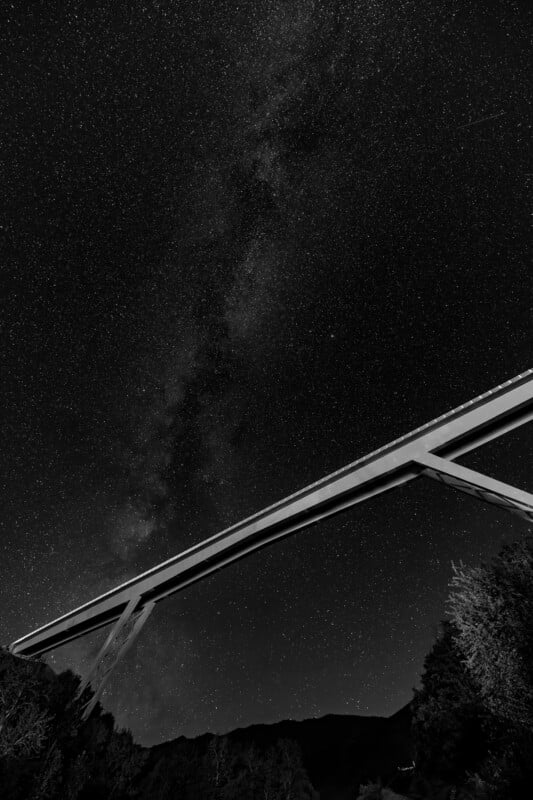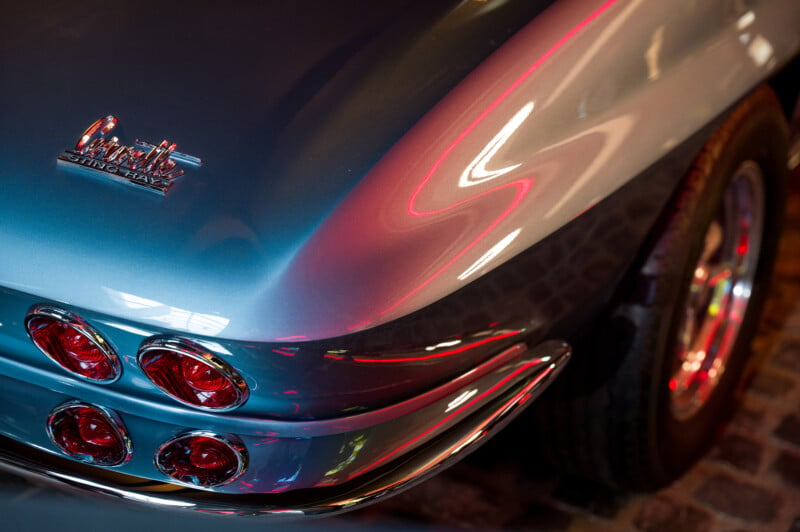At This Point, I’d Happily Only Use Sigma Lenses
For a long time, third-party optics usually meant compromise somewhere, but in 2024, does that apply anymore? Is it possible for a photographer to be perfectly happy shooting with, for example, Sigma lenses and nothing else?
Sigma and Tamron have existed for over six decades and built solid reputations as budget-minded optical companies that made third-party glass for all the major lens mounts.
Many other companies jumped on the third-party bandwagon as well, and you may have heard of storied names like Vivitar, Tokina, and Kiron, to name just a few. Some of these optical studios have gone by the wayside but many are still making lenses to this day. Nowadays we have a ton of Chinese-based lens companies flooding the market with new designs as well.
However, for the vast majority of this period, these companies all made lenses with the understanding that they would be optically inferior to the OEM brands but provide unique formulas and enough optical performance to justify the much lower prices. As a result, third-party lenses became synonymous with the enthusiast or budget-minded working photographer. There was no misconstruing that these lenses could directly compete with the likes of Nikon or Canon. Still, the third-party manufacturers made the occasional gem and carved out a healthy market of their own for decades.
That all changed in 2012 when Sigma released its first Art series 35mm f/1.4 lens for DSLRs. This lens, and the subsequent Art series primes, were the first third-party options that had working professionals considering a Sigma product over the OEM options regardless of the price point. Companies like Zeiss had been making lenses that were optically equal or superior for years but the price tag was drastically higher than anything available. The Sigma Art series gave an optical performance on equal footing and yet delivered it all for less money. Working at The Camera Store at the time, I sold many of these lenses and it was clear that times had changed. Since then, we have seen a golden age for third-party lenses with Tamron and Tokina releasing excellent products of their own, and major camera manufacturers licensing and rebranding third-party lenses as OEM optics.
Sigma, in particular, has taken its early success and run with it, making high-quality zooms and primes for mirrorless cameras that perform on a level playing field, all while keeping costs down for the consumer. It’s clear that Sigma wants to shed any sort of past stigma as a budget brand and instead be respected as the premium lens manufacturer it has become. But old stigmas do tend to stick around and it’s an uphill battle to convince users that an alternate can be just as good, or better. I’ve reviewed so many Sigma lenses now and seen the results first-hand that I’ve decided to carry out my own little thought experiment.
Could I hypothetically be happy with using just Sigma lenses, eschewing any OEM options entirely? I love the Sony a7R V and it certainly has a sensor that can push lenses to their limit. More importantly, Sony makes some incredible lenses of its own with the G-Master line which would be hard to compete against optically, and frankly, the Sony lenses are some of the priciest out there. All the more reason that switching to an all-Sigma lineup could make sense not only practically but fiscally as well. Let’s first dig into the prime lenses that would help me with a complete kit.
The Sigma Primes:
Starting at the widest, my new favorite night-time lens is the Sigma Art 14mm f/1.4 DG DN. I don’t do a lot of astrophotography but the Sigma 14mm inspired me to step my game up and enjoy the experience.
For a similar price, the Sigma 14mm out-competes the excellent Sony 14mm f/1.8 G-Master by providing twice as much light while also being sharp and well-corrected for coma and sagittal astigmatism. Third-party lenses make a lot of sense in general when it comes to astrophotography and this is why companies like Samyang have also flourished.

I’ve never been enamored with ultra-fast lenses because the size, cost, and image quality are usually compromised. But what if I could have a fast 50mm lens that provides an ultra-bright f/1.2 aperture without being huge or expensive? The Sigma Art 50mm f/1.2 DG DN was the last lens I reviewed and the last lens I expected to like. Turns out it is lighter than the Sony version, insanely sharp wide-open, and has some of the most beautiful bokeh I’ve seen.
This makes it a versatile low-light or portrait lens with a much lower price tag than the competition. A perfect example of why Sigma lenses can make a lot of sense to anybody and not just those looking to save some money.

For me, a good 85mm lens is more of a go-to walk-around lens than even a 50mm. I like the slightly compressed look and a little bit more reach for street photography and portraits. A good 85mm can also be a shallow depth-of-field lens and while I don’t always want that look, I do want it to be good when I need it. There haven’t been many new 85mm lenses released lately by any of the manufacturers we are discussing so things might change sooner than later, but for my money, the Sigma 85mm f/1.4 is the best option right now. I like the Sony G-Master 85mm f/1.4 which delivers okay sharpness wide-open and with beautiful bokeh but it’s one of the oldest G-Master lenses out there and could use an update. The Sigma 85mm f/1.4 is better wide-open with a lovely rendition of soft backgrounds and the price is right too. Unfortunately, it comes with a hefty 40-ounce carry weight, but I still like it.

For the wildlife shooter, a compact tele with excellent reach is nice to carry in the field. The new Sigma Sport 500mm f/5.6 is the perfect lens for this. With an ideal reach for most situations, the 500mm can be used with teleconverters to go even farther and the f/5.6 aperture is a good compromise between light and weight.
Even better, the Sigma 500mm is near perfect optically, with astounding sharpness and correction all in a rugged, fast-focusing design. It’s expensive but still competitive with any of the OEM super telephoto lenses out there, and the performance is good enough to compete equally against anything out there.

The Sigma Zooms
Every working pro needs a good f/2.8 general-purpose lens and the Sigma Art 24-70mm f/2.8 absolutely fits the bill. Now I’m going to go ahead and say that I do prefer the performance and weight of the Sony G-Master 24-70mm f/2.8 II which is a near-perfect albeit expensive lens, but this article isn’t about whether Sigma is always the best choice but rather if it’s a viable and competitive choice. In that regard, the Sigma 24-70mm f/2.8 is a fantastic lens in its own right and is perfectly capable of professional results for anything that you would use it for. It’s so good in fact that Leica chose to license a version of it as the basis for the 24-70mm in the SL series of full-frame camera lenses.

Now you might expect that the next zoom in our list would be the Sigma Sport 70-200mm f/2.8 but I wasn’t blown away by that lens. There is nothing wrong with it per se, it just tends to be a little heavy, a little bulky, and a little boring. The optical performance is decent but doesn’t stand out in any way and I would personally look to a better OEM option like the Sony G-Master 70-200mm f/2.8 II.

However, I would instead get the Sigma Contemporary 100-400mm f/5-6.3 because it covers such a versatile range for any sports or wildlife shooting that I would do. This lens is affordable and light-weight with impressive optical performance, and a rock-solid image stabilizer as well. I feel like the combination of this lens, and both the 85mm f/1.4 and 500mm f/5.6 can cover almost any telephoto situation that I would come across.

Third-Party Now Equals First-Party
Every photographer is going to have different needs and it’s important to understand that the above lenses are what I could see working for myself. However, I feel like the above kit would work for many other people and I’m also confident that Sigma provides enough lenses covering different use cases that more specialized photographers could also exclusively use Sigma.
What fascinated me most about this experiment was just how comprehensive Sigma has become. The fact remains that Sigma is a premium lens manufacturer and there are so many reasons to choose its lenses over the OEM options strictly on the merits of optical performance. Tamron has also come a long way and they make some of the most interesting and unique zoom lenses around but the Tamron lineup lacks mirrorless prime lenses and could flesh out more ranges of coverage in the future.
In the end, no rule says you have to only buy lenses from one brand or another. The discerning photographer looking for the best performance possible would do well to invest the time to research third-party lenses. Cherry-picking the ideal optics from each brand available is an excellent route to go, even if budget is not a big concern. And, hypothetically, if you did find yourself with an E-mount or L-mount camera and only Sigma lenses at your disposal, I think your photographic business would be in good hands